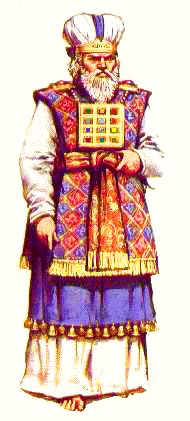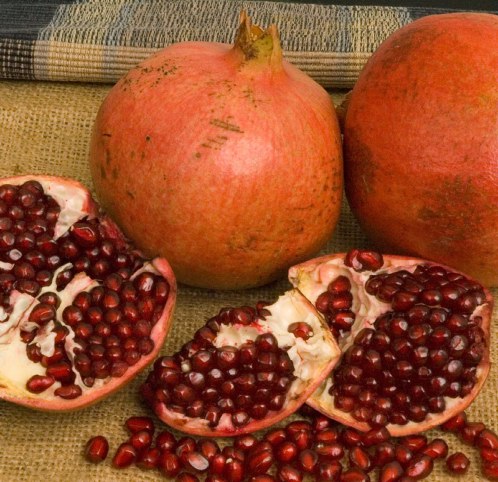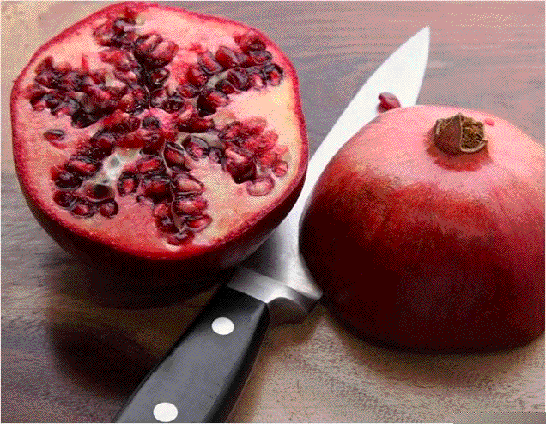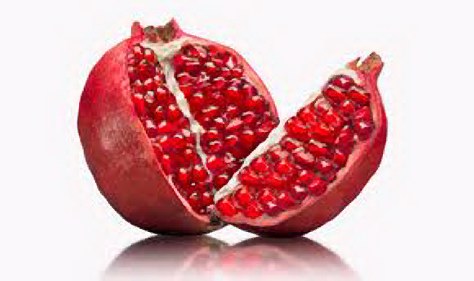"LET THERE BE LIGHT" Ministries
THE SANCTUARY AND TEMPLE OF GOD, Part 7 quotes
1) The outfit which all the priests wore when performing their worship services were to be “holy garments”, which were made “for glory and for beauty” (Exodus 28:2). As these garments were to be holy, then each priest was to first “wash his flesh with water” and be bodily clean before they “put them on” (Leviticus 16:4; Exodus 29:4). In addition, the priests could only wear “linen garments; and no wool shall come upon them, whiles they minister in the gates of the inner court, and within” (Exodus 28:5; Ezekiel 44:17). This was because linen fabric allowed the body to “breathe”, while wool and other fabrics “causeth sweat” (Ezekiel 44:18).
2) The work of the High priest was of greater importance than the common priests, so the outfit and outer clothing of the high priest differed from the attire of the common priests. As Exodus 29:5-6 instructs, the high priest was to first wear a “broidered coat” (Exodus 28:4), then a “robe” (Exodus 28:4), a “curious girdle” which held or supported an “ephod” (Exodus 28:6-7) and also a “breastplate” attached to the ephod (Exodus 28:4), a turban or “mitre upon his head” (Exodus 29:6), and finally a “holy crown upon the mitre” (Exodus 29:6). Now let us investigate further into these different holy garments and sacred items.
The coat was immediately next to the skin of the priest and was made of “fine linen” that had been embroidered (Exodus 28:39). It was undyed and white in color, was of one piece, and extended from his shoulders down to his ankles.
Over this coat was placed a linen robe “of woven work, all of blue” (Exodus 39:22). This blue robe covered up and hid most of the under coat and also extended down towards the ankles. Upon all of its hem were made and placed “pomegranates of blue, and of purple, and of scarlet” (Exodus 28:33), of “twined linen” (Exodus 39:24), as well as “bells of pure gold between them round about” (Exodus 28:33).
These golden bells sounded off each time the high priest moved, and were loud enough to be heard outside the sanctuary. So any of the people listening could ascertain exactly where the high priest was within the sanctuary and could understand what responsibilities and services he was performing, as “his sound shall be heard when he goeth in unto the holy place before the Lord, and when he cometh out” (Exodus 28:35).
Over this blue robe was placed a “curious girdle...of gold, of blue, and purple, and scarlet, and fine twined linen” (Exodus 28:8). This colorful girdle covered the high priest’s back and chest which confined the coat and robe to his body and kept it from billowing up.
Over the top portion of this robe was placed an Ephod. This Ephod was a shoulder piece that went around the neck and that extended down to the beginning of chest, and was attached to or was supported by the top of the curious girdle that was situated below it (Exodus 28:6-12). It was to be made “of gold, of blue, and of purple, of scarlet, and fine twined linen, with cunning work” (Exodus 28:6). In this Ephod was set “two onyx stones” (Exodus 28:9) “upon the shoulders of the ephod” (Exodus 28:12), and upon these stones were engraved the names of the twelve tribes of Israel, six names engraved on one stone and the other six on the other “according to their birth” (Exodus 28:10). These were “stones of memorial unto the children of Israel” so that when the high priest officiated in the sanctuary, he could “bear their names before the Lord upon his two shoulders for a memorial” (Exodus 28:12). The practical function of the Ephod was to hold up “the breastplate of judgment” (Exodus 28:15) through interlocking golden rings and wreathen golden chains (Exodus 28:14, 23-28).
This golden breastplate of judgment was square with twelve precious stones set in “four rows” of three stones each (Exodus 28:17-20). On each one of these stones was engraved one of the names of the twelve tribes of Israel (Exodus 28:21). Each stone was made up of a different mineral and color, and thus was formed with its own particular characteristics and had its own peculiar way of reflecting and diffusing light. Yet when they were combined together in perfect order on the breastplate, the light reflecting from one stone was picked up by the stones next to it and so on and then reflected all around, until all their and sparkling lights and combined colors made up one beautiful, harmonious and glorious sight to behold. So even though each of these stones had their own special significance differing from the others, yet unified together they aided one another to produce more dazzling light than if they had sparkled all alone.
This breastplate was fastened and bound to the “girdle of the ephod” through the two interlocking golden rings and wreathen chains, as well as “a lace of blue” so that “the breastplate be not loosed from the ephod” (Exodus 28:27-28). This arrangement made the breastplate of judgment rest squarely in front of the high priest’s chest, signifying that he was bearing “the names of the children of Israel...upon his heart...for a memorial before the Lord continually” (Exodus 28:29), and was also bearing “the judgment of the children of Israel upon his heart before the Lord continually” (Exodus 28:30).
In addition to these 12 stones set in this breastplate of judgment there were set two other large stones of great brilliancy, one on the right and the other on the left. These two stones were given the names of “the Urim and the Thummim” (Exodus 28:30). The Hebrew word “Urim” translates and means “lights” (Strong’s, word #224) and is derived from the Hebrew word “uwr” which translates and means “flame, fire, light” (Strong’s, word #217). So the Urim meant fiery lights. The Hebrew word “Thummim” translates and means “perfections, complete Truth” (Strong’s, word #8550), but it had no connection with fiery lights. So by these two stones, one connected with fiery lights, and the other with the lack of light or darkness, one could obtain the complete truth and perfect way to follow.
“...it appears to the present writer that if Urim and Thummim are antonyms, and Urim means "light," it is by no means difficult to connect Thummim with darkness, inasmuch as there is a host of Hebrew stems based on the root -tm, all indicating concealing, closing up, and even darkness (compare ... (see Job 40:13), ... and even and cognate Arabic words in BDB). This explanation would make Urim and Thummim mean "illuminated" and "dark" (compare Caster in Hastings, ERE, vol IV, p 813)...” Nathan Isaacs in The International Standard Bible Encyclopedia Online, under words “Urim and Thummim”, (http://www.internationalstandardbible.com/U/urim-and-thummim.html, accessed 5-3-13).
When counsel or direction from God was needed in some great and important matter, the high priest would come “before the Lord” (Numbers 27:21) and questions would be asked of God that required a positive or negative answer. God would indicate a positive answer by miraculously causing light to shine upon the Urim stone which then made it sparkle in fiery radiance causing many lights or “bright rays darting out thence...which splendor yet was not before natural to the stone” (Antiquities, vol iii, p 8, paragraph 9, by Josephus, Whiston's translation, at http://www.jewishencyclopedia.com/view.jsp?artid=52&letter=U#ixzz19AyrwBaA, accessed 5-3-13). But if God did not miraculously cause light to shine upon the Urim, and prevented the Thummim from emitting any diffusion of light at all by perhaps miraculously covering it with a shadow, then this indicated a negative answer. So the needed answer to these important questions was not obtained through the often erroneous wisdom of men, but “the Lord answered” (1 Samuel 28:6) these questions Himself! Thus through this means the complete Truth and perfect will of God could be directly obtained and known in any important matter, then this truth was communicated to all needing to know, and then it was followed with complete trust and perfect confidence.
The final part of the outer clothing which the high priest wore was a white mitre or turban made “of fine linen” (Exodus 28:39). This mitre covered the hair and head from just above the eye brows to around the base of the skull. Upon this mitre was to be placed “a plate of pure gold” which had the words “HOLINESS TO THE LORD” engraved upon it (Exodus 28:36). This golden plate was to be secured to “the forefront of the mitre” (Exodus 28:37) directly over “Aaron’s forehead” (Exodus 28:38) with “a blue lace” (Exodus 28:37), thereby making it a type of a “holy crown” (Exodus 29:6, 39:30).

3) Since all the priests had to first bathe before they could wear these holy garments, this meant that each priest was to be fully cleansed in body or in their flesh before they could wear these holy garments. This signified that each priest was to cleanse themselves “from all filthiness of the flesh and spirit” (2 Corinthians 7:1), having all their sins fully repented of and put away, and all their bodily habits sanctified before they could be fit to wear these holy garments of salvation and properly minister for the people before God.
What represented the fact that only linen garments and no woolen garments could be worn so that the priest would not sweat? Sweat is internal body fluids that are naturally secreted in order to reduce body heat, but they also quickly permeates and soils any clothing worn they come in contact with. Sweat contains sodium chloride or salt, electrolytes, and especially in the armpits a noticeable odor that contaminates with its own smell whatever it comes in contact with. This then symbolizes that all priests were to be fully clean in body as well as in clothing while ministering before the Lord God. No uncleanness or selfish defilement of any kind was to be allowed in the characters of those appearing before God, as this would cause them to bear a smell of contamination and not of holiness, and thus would be rejected by God as unfit to minister until they were properly cleansed. Also the warmth of our devotion to God is never to be cooled down, but we are always to remain hot and on fire for our Lord.
4) The seamless coat of white linen that was next to the skin represented the righteousness of Christ that is to cover each and every follower of God until none of their own flesh or self can be seen, but only Christ and His righteousness.
5) What represented the blue colored robe that was placed over the white coat and which had on its hem linen pomegranates of blue, and of purple, and of scarlet, as well as golden bells in between and round about these pomegranates?
The color blue represented obedience to all of God’s commandments. Now since this blue robe was placed over the white coat, then this symbolized that as long as we are covered in Christ’s righteousness, then we will ourselves be able to render obedience to all of God’s commandments, and thus become righteous ourselves as we follow the perfect righteous example of our Lord’s character.
The pomegranates were colored blue and purple and scarlet and placed on the bottom of this blue robe. We saw earlier that the color blue symbolized obedience, the color red symbolized sacrifice, and the color purple, which is a combination of blue and red symbolized royalty that was obtained through a combination of obedience and sacrifice. Thus these colored pomegranates symbolizes our combined obedience and sacrifice to God wherever we go, which thus shows us to be the sons and daughters of God and part of royalty.
Pomegranates themselves are a singular and very unusual kind of fruit, but have a lot of spiritual significance. Pomegranates are round, have a reddish outside skin, and contained within it are lots of small red edible and juicy seeds called pips.

When you cut the pomegranate in half you will find that these pips are mainly grouped together in 6 very tightly knit, distinct, separate and autonomous group sections.

These pomegranate pips are also so closely pressed and united with one another that there is no space remaining between them.

Covering over and dividing between each of these 6 groups of pips is a white pithy flesh. It is this white flesh that fully divides each group from one another, and each and every pip in each and every group is individually connected to this flesh. It is this personal connection with this white flesh that allows each pip to grow and ripen, and without this personal connection the pip would cease to grow, would then wither and die. Also with 6 groups being seen in both halves of the cut pomegranate, you then have a total of 12 groups.
Now even though these pips are closely pressed together in unity with one another, yet they are not attached to one another, and neither are they all attached to just one pip, but each pip is seen to be personally attached to and surrounded by this white pithy flesh. And finally, the pomegranate fruit itself ripened and was ready to pick and eat in the fall on the day of Atonement.
The pomegranate itself represents Jesus Christ. Its reddish skin represents His shed blood that alone makes possible the forgiveness of our sins. Its white pithy flesh represents Christ’s righteous and innocent life and body sacrificed in our behalf. And these red pips symbolize each individual follower of God who have voluntarily sacrificed self in order to become His sons and daughters. Just as the white pithy flesh completely surrounded the pips, this symbolized that the righteousness of Christ must completely surround each and every follower of God. And since each individual pip was personally connected to this white flesh themselves, then this symbolizes that each and every follower of God must have and maintain a personal connection with Jesus Christ Himself in order to grow and ripen into a juicy fruit, or they will cease growing, wither away and be forever lost. So I hope you can clearly see that it is only by each and every follower of God voluntarily sacrificing self in order to be covered over and hid by Christ’s shed blood and His robe of righteousness, and then by personally partaking of His righteous flesh that they are then through this vital personal one-on-one connection with Him enabled to grow into that perfect and mature man or woman in Christ, and can then be saved as a true living son or daughter of the Almighty Most High God.
As both halves of the cut pomegranate contained 6 groups of pips each, making a total of 12 different groups, so just like with the 12 loaves of Showbread that were divided into 2 stacks of 6 each, this symbolizes both the old and new covenants/testaments. The number 12 represents the 12 tribes of Israel upon which God’s true church was established in the old covenant/testament (Acts 7:38), as well as the twelve apostles upon which God’s true church was established in the new covenant/testament (Ephesians 2:20), and it is upon both of these old and new covenant/testament founding fathers that the city of God itself is established (Revelation 21:12-14).
As these pips were specifically grouped together in 6 very tightly knit groups and so closely pressed and united together that there was no room left between them, then this symbolizes that God’s followers are to be so closely pressed together in unity with each other that there is no room left for the devil to get in between them and cause dissension and division.
Since all 6 groups of pips were all personally connected with the same white pithy flesh within the same pomegranate fruit, so then by our personal connection with Jesus Christ we thereby all become the children of God, and are actually brothers and sisters within the same royal family. This then means that we are absolutely equal one with another in the same body of Christ, and no one sibling and family member among us, or even group of siblings among us, can be or are to be superior over us.
Just as there were 6 different autonomous groups of pips, but each pip was still personally connected with the white pithy flesh, so then we must not take the position that only those who are personally connected with our particular church group are then connected with Christ and can be saved, while all others who are not part of our group are not part of Christ and are lost. This is because God has many followers all around the world whom He considers to be His true sons and daughters through Jesus Christ His Son, and this fact of truth especially includes God’s Remnant people of these last days!
“And the remnant of Jacob shall be in the midst of many people as a dew from the LORD, as the showers upon the grass, that tarrieth not for man, nor waiteth for the sons of men. And the remnant of Jacob shall be among the Gentiles in the midst of many people...” Micah 5:7-8.
This means that the idea of there being just one church group of God’s Remnant people, and therefore we all must be connected with this one church group in order to be the Remnant, is not the truth at all according to God and His word. And those who are believing and promoting this false idea among God’s Seventh day Remnant people today are just trying to centralize the work under another popish or authoritarian system.
Each Remnant group is to remain autonomous from one another and not centralized into and controlled by just one group. Yet there is to be a close connection and a working relationship with one another, because we are all brothers and sisters of the same family in Christ!
Since the pomegranate ripened and was ready to pick on the Day of Atonement, then this signifies that as soon as the individual Remnant members of God’s true church are fully connected with Jesus Christ, and are also so tightly pressed and united so fully together in brotherly love that the devil cannot divide them from each other, then they would have finally fulfilled Christ’s last prayer of unity listed in John 17. This fact would then reveal that they are fully ripe, the antitypical day of Atonement will then end, and Christ will then come to take His obedient fully mature Remnant people home to be with Him for ever.
6) What represented the golden bells on this blue robe? These bells tinkled whenever the priest moved, and thus allowed anyone listening to understand exactly where and what the priest was doing. This symbolized that the priest could not hide his actions from being noticed by others. So in like manner, we also cannot hide our actions from being noticed by others, but are as an open book “known and read of all men” (2 Corinthians 3:2).
“Curse not the king, no not in thy thought; and curse not the rich in thy bedchamber: for a bird of the air shall carry the voice, and that which hath wings shall tell the matter.” Ecclesiastes 10:20.
“For nothing is secret, that shall not be made manifest; neither any thing hid, that shall not be known and come abroad.” Luke 8:17.
This means that we must be circumspect in all that we think, all that we do and say, whether in public or in private, because no matter how we might try to keep our sins hidden from view, others will eventually find out. This also means that no matter what false accusations and blatant lies may be spread around about us, we can all rest assured in the fact that God will allow the truth to eventually come out, and no matter how careful our enemies might have been in trying to conceal their evil tracks and web of lies, yet they all will be exposed as the real liars and trouble-makers they have been, while our character will finally be vindicated.
7) What represented the curious girdle of gold, blue, scarlet and purple that covered the high priest’s back and chest and bound the blue robe as well as the white coat underneath firmly to his body? This girdle represents our faithfulness to God and determination to do whatever it takes to remain His obedient and righteous follower.
“And righteousness shall be the girdle of his loins, and faithfulness the girdle of his reins.” Isaiah 11:5.
Just as this colorful girdle bound the blue robe and white coat close to the body, so it is our faithfulness unto God that keeps our obedience to His law as well as Christ’s robe of righteousness close to and a part of our very lives.
8) What represented the Ephod or the shoulder piece and the two stones with the 12 names of the tribes of the children of Israel engraved on them? The two stones symbolize all of the followers of God, and as the shoulders are used to lift, support and bear the weight of heavy burdens, so this symbolizes that our Mighty Redeemer is strong enough to lift, support and bear all of our burdens and perplexities if we will just let Him do so for us.
9) What represented the golden breastplate of judgment containing 12 different precious stones with the names of the twelve tribes? As this breastplate of judgment rested squarely in front of the high priest’s chest and was secured there by being attached to the curious girdle, so this signified that Christ is bearing the names of each and every follower of His squarely and securely upon his heart before God Almighty, so that none of His true followers would be condemned in the judgement and be lost. This also signified that the high priest was linking his entire being, as well as binding all his life’s interests with the people he represented before the Lord God. This just reinforced the fact that the priests were the servants of their people before God, and therefore bore a very weighty responsibility to faithfully perform and remain true to their calling and work.
As each of these 12 precious stones was formed of a different mineral, and each had its own special significance differing from all the rest, so this symbolized that each and every one of God’s followers have their own special work to do for God which no other follower of God can do for them. But even though each of these stones were formed with their own particular characteristics differing from the others, yet they were all organized and unified together in that one breastplate and therefore aided one another to produce more dazzling light than if they had sparkled all alone. This then symbolized that even though each one of us are formed with our own particular characteristics and work to do for God, yet we are to be organized and unified together forming one harmonious body and thereby can aid one other to accomplish so much more in glorifying God than if we remained separate from one another.